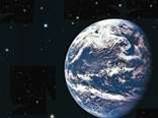
The European Space Agency said that the NGC 4449 starburst was triggered by interaction or merger with a smaller companion.
"NGC 4449 has been forming stars for thousands of millions of years, but is currently experiencing star formation at a much higher rate than in the past," the agency said.
"This unusual explosive and intense activity qualifies as a starburst, meaning that at the current rate, the gas that feeds stellar production would run out in about a thousand million years.
"Starbursts usually occur in the central regions of galaxies, but in NGC 4449 it is more widespread since the youngest stars are present in the nucleus and in streams surrounding the galaxy."
The Nasa/ESA Hubble Space Telescope's Advanced Camera for Surveys observed NGC 4449 in the visible (blue and green) infrared and hydrogen-alpha regions of the spectrum.
Hot bluish white clusters of massive stars are scattered throughout the galaxy, interspersed with numerous dustier reddish regions where star formation is taking place. Massive dark clouds of gas and dust are silhouetted against starlight.
A galaxy-wide starburst such as that seen in NGC 4449 resembles primordial star-forming galaxies, which grew by merging with and accreting smaller stellar systems.
Since it is close enough to be observed in detail, ESA describes NGC 4449 as the "ideal laboratory" for the investigation of what may have occurred during galactic formation and evolution in the early universe.



_(20).jpg&h=140&w=231&c=1&s=0)





 iTnews Executive Retreat - Security Leaders Edition
iTnews Executive Retreat - Security Leaders Edition












_(1).jpg&h=140&w=231&c=1&s=0)



